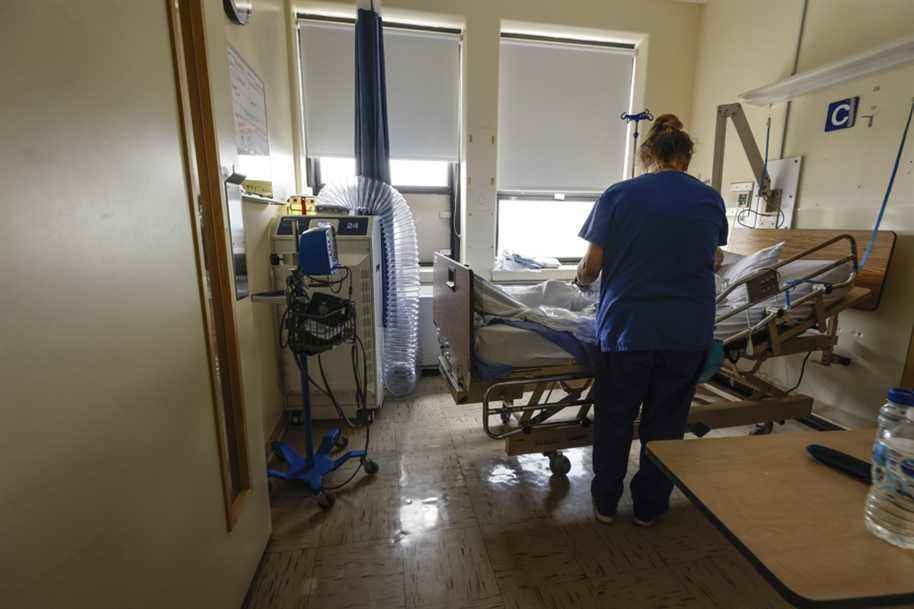The number of practicing nurses in Quebec continued to grow in 2020-2021, but this growth of 1.9% was less than that of 2.2% recorded the previous year and which was the largest of the ten last years.
The Order of Nurses of Quebec (OIIQ) unveiled on Monday its annual statistical report which reports nearly 80,500 nurses registered on its Roll as of March 31, 2021. The profession remains overwhelmingly female, but the proportion of women he male workforce reached its highest level in ten years, at 14.1%.
Despite the increase, the proportion of those working in the public network fell slightly, from 84.8% last year to 84.4% this year. At the same time, the number of nurses working in private agencies increased by 19%. Although the approximately 2,760 professionals who have turned to the private sector represent only a small proportion of the total, the increase is nonetheless the largest in ten years.
The organization of work singled out
In its press release, the OIIQ also notes that “the shortage of nurses in the health and social services network has shone the spotlight on issues related to the organization of work. The most recent report shows in particular that more nurses are turning to the private sector to improve their working conditions. ”
Its president, Luc Mathieu, adds that “improving services to citizens requires the return and retention of nurses, but also three priorities: more efficient work organization, better clinical support and university training. to meet the more complex needs of the population ”.
Moreover, these statistics do not take into account more than 6,000 practice rights granted by the Order to participate in the effort to fight the pandemic. These included former members who were no longer on the roll, nurses from the Armed Forces, students, nurses graduating from outside Canada. The exercise rights could be full or limited depending on the case.
More nurses in Quebec and regional inequalities
One of the things to note is that Quebec has a ratio that is significantly higher than the Canadian average, of 7.62 nurses in direct care per 1000 inhabitants, a slight increase compared to 7.53 last year, which compares very well. favorably to the 7.02 of the rest of Canada. Ontario lags significantly behind Quebec, with a ratio of 6.32.
On a regional basis, we note that it is the Nord-du-Québec / Nunavik / Terres-cries de la Baie James region that has – by far – the best ratio in the province, i.e. 13.45 nurses per 1000 inhabitants. , ahead of the regions of Quebec (11.04), Montreal (10.33) and Gaspésie – Îles-de-la-Madeleine (9.33). In contrast, it is in the Lanaudière region where this ratio is lowest, with 4.93 nurses per 1,000 inhabitants. Follow the Outaouais (5.09), the Montérégie (5.18), the Laurentians (5.29) and Laval (5.49).
On the other hand, where Quebec is seriously lagging behind is in the number of specialized nurses, although half of them have a university degree (44.5% have a bachelor’s degree and 5.4% have a master’s degree). .
Thus, there are 842 specialized nurse practitioners (NPs) in Quebec, a ratio of 9.3 per 100,000 inhabitants, compared to 18.4 in the rest of Canada and 22.2 in Ontario. IPS are specialists in primary care, adult care, neonatal care, pediatric care and mental health.
Another category, that of specialist clinical nurses (CNS), is to be established. There are only 35 in Quebec and only one specialization has been recognized so far, namely infection prevention and control “while the needs extend to other areas of practice”, argues the Order.
Finally, the statistical report of the OIIQ presents a curiosity, in this case the “rate of integration into the labor market”. We learn that this rate among holders of a bachelor’s degree reached 93.5% against 89.9% among those with a college diploma. Although these are very robust rates, it is still surprising that in times of shortage of nurses, between 6.5% and 10% of them cannot find work.
